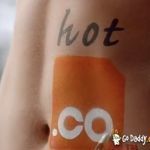Erik Qualman's Blog, page 672
February 13, 2012
Valentines Day Facebook Breakup Video [funny ending]

The above comedic Valentine's Day Facebook Breakup video is a great reminder for all of us just how much social media has changed our lives. It's also our friendly reminder to not forget Valentine's Day!
Please find below a great infographic from eHarmony on what is most important in a relationship.
Amazon Kindle: Valentine's Gift $139


Heart image courtesy of iStockphoto, A1Stock
[image error]
February 10, 2012
We receive 147 emails per day | How to Manage

I love the below information on e-mail from Boomerang:
Use words like Apply, Opportunity, Demo in the subject line
Avoid words like Join, Speaker, Invite in the subject line
Send marketing emails at 6 am (10:30 am on Wed is also great)
Send personal emails before work or at lunch for best response rate
77% of people expect a response within 2 days
We delete 80% of our e-mail in 3 seconds
Learn to say "no" quickly to clear out your inbox (easier said than done)
[image error]
Social Marketers Take Note – 6 Lessons from Social Commerce

Social commerce has grown in leaps and bounds from a nascent industry in 2010 to projected $9 billion this year, and expected to reach to $14 billion in 2013, according to Booze Alan. The team at Awareness, Inc. set out to discover the secrets behind this success and the lessons that social marketers can learn to make their programs and initiatives more successful. We are excited to bring to you our next free white paper, "Social Commerce Lessons: The 6 Social Principles that Increase Sales."
Success stories in social commerce, defined by Altimeter's Lora Cecere as the use of social technologies to listen, understand and engage in order to improve the shopping experience, range from big brands like the Gap, bringing in sales of $11 million in one day, to tiny brands like Orabrush tongue cleaners, whose YouTube videos and Facebook ads landed them shelf space at Wal-Mart. The biggest lesson learned is that social commerce is thriving by influencing human behavior employing the Six Social Principles – Social Proof, Authority, Liking, Reciprocity, Scarcity, and Consistency. These principles were originally defined by Robert Cialdini in his book, "Influence – The Psychology of Persuasion." Paul Marsden also reviewed these concepts as the backbone of social commerce in his article, "How Social Commerce Works: The Social Psychology of the Social Shopper," illustrating their function in social media.
Did you know that 90 percent of all purchases are subject to social influence and 75 percent of Facebook users "like" a brand? Are you aware that adding a "Like" button to your online product description can increase product awareness by 246 percent? As consumers become increasingly surrounded by social technology, marketers need to understand the new ways of engaging customers and prospects at the various stages of their decision-making process using the Six Social Principles.
The Six Social Principles – Social Proof (follow the crowd), Authority (follow a leader), Liking (follow peers), Reciprocity (return the favor), Scarcity (things that are scarce are more valuable), and Consistency (routine), can be used as the foundation for all marketing programs because they involve nurturing relationships, building longstanding trust with customers and maximizing the growth of social media investments along the way.
In fact, the consistent application of the six Social Principles in social marketing planning, campaign design and execution are steadily becoming key indicators of social marketing maturity. Social- savvy companies have moved beyond simply building social presence and are now focusing on meaningful social engagement. These are the companies that will reap the most benefit from their social marketing investments in 2012 and the years to come.
"Social Commerce Lessons: The 6 Social Principles that Increase Sales" describes in detail these principles and helps marketers at both B2C and B2B companies understand how they can employ them in a responsible and mutually beneficial way to grow engagement, sales and brand advocacy. Here's a glimpse into how marketers focused on B2C prospects can use three of the principles to impact the effectiveness of their initiatives:
The same principles apply in a B2B setting but the ways these principles can be applied differs as the B2B sales cycle is a lot longer and requires the input and support from multiple stakeholders.
Even though some brands are still at the experimentation stage with Social Commerce, they are seeing huge early successes. Using group-buying site Groupon, the Gap was able to bring in sales of $11 million in one day. On it's Facebook store P&G sold more than 1,000 boxes of diapers in under an hour. To learn how you can employ the Six Social Principles to engage your customers and turn them into brand advocates, download "Social Commerce Lessons: The 6 Social Principles that Increase Sales" today. Don't hesitate to share your success and insights – what have you done to successfully convert buyers into advocates? How have you shown consistent value to your prospects and opinion leaders? Join the conversation on Twitter, on Facebook at Social Media Marketing Best Practices, or LinkedIn at the Social Media Marketing Mavens Group.
Mike Lewis
@BostonMike
[image error]
February 9, 2012
Companies Going further to new products launches: Strategies You Need to Know
Salespeople crave for new product launches. They believe new product boosts, otherwise laggard, sales. The reason behind the believe is new product draws more attention and raise people's expectations. But do all new products succeed?
The answer is no. Industries like, automobile, FMCG, consumer durable, real estate and many others regularly come out with new products. In fact, real estate agents love to sell same inventory as new again and again from time to time. But hardly few of those products sustain post-launch life. Whose fault is this?
It is quite tempting to blame the product but this is not true always. Often companies develop a product and start believing that people will automatically join in a buying spree. They completely overlook the product launch or just finish it in haste. But nothing goes automatic as far as buyers' sentiment is concerned. So, product launch is as important as your new product.
So, you need to brainstorm to plan a successful product launch. It costs time, money and labor. Don't let any of them to fail. Take note of 6 strategies that will do wonder to your next product launch.
People first
This is a most common mistake that we fall for. We perceive a need and then develop a product around it without putting much effort to know what people actually want. Nobody stops you from developing a product like Apple does. They build up an altogether different definition-changing product. But that need too much of a courage that not all of us can afford.
So, even if you cannot match Steve Jobs, keep the product development process people-centric. Dig deep to understand what people want in a particular product category. This will lower the chance of new product failure.
Properly sequenced launch
We do mistakes and often fail to recognize where the fault lies. For a new product, there are lot many things to take care of, like, development, production, delivery, sales, after sales and repeat sales. For a truly successful product you must work on every segment. How could you do that?
Keep the process error-free. First, you need to start with an internal launch. This is not a formal launch but just a hint that you are willing to launch a product. In this phase you prepare your business for the product launch. Take care of development and production. Introduce your sales team with the product. Inform them with product. Ask them what they think about the product, how they expect the sales to be and what would be market response.
After that, bring in few of your dealers and affiliates. Don't take them all because still you are not sure about the profitability. So, you cannot commit what commission affiliates can expect. Ask for their feedback. Are they feeling comfortable with the product?
Last two sequences will bring out abnormalities, if any, in your product and launch process. Rectify them and prepare for a full-fledged final launch with all the affiliates and dealers. At this stage you should have the entire front ready for the final bash.
Create a sense of scarcity
Scarcity moves us, even if, when it's a fake one. Cash on it. Every successful business uses this technique. You can say it's a cliché. But, this cliché works wonder. Real estate agents with big inventory always post a limited period offer tag. Old car dealers follow this too. To sweeten the deal they tweak the price within that period.
To gather highest possible business on a new product launch you can use this. However, do not overuse the tool. That might bust you up. Sense of scarcity works best for your existing buyers, who know what you make and how you make. But someone, who is in prospecting stage, does not buy scarcity very well. First you have to upgrade prospects to customers to use this use this tool on them.
Prospecting
Lack of prospecting is a major blow that can sabotage your product in post-launch stage. We open shop and expect people to come down; a telemarketer expects call to come from buyers' side. But, that does not work. People will visit you or call you only when they face a problem and they have no ready solution to it. But your business cannot wait that long.
So, reach out to your prospects and suspects. Turn suspects to prospects and then prospects to customer. This is a process that does not pay you dollar overnight but never fails to pay you back over time. Any successful salesperson knows it and practices it. You must keep in mind that prospecting is a number game. Even if you are a super-salesperson, don't expect to convert the entire suspects to prospect and all the prospects to customers. This does not happen. There is a standard conversion rate for every industry. If you have highly efficient sales-force, you can stretch the number but cannot change it a big way.
Build up sensation
People don't like salespeople but they like to know about products and, especially, they love to follow sensation around a new product. Hype draws their attention and expectation grows up within. But what could you do about building up hype?
Tie up opinion-leaders and media in the launch process. Let them know the product and give them an idea that what the final product could be like. Let them talk about it – both the positives and negatives. Don't be afraid. More they talk about your product, more attention you earn in public eyes. People like listening to them. Even if you cannot bring in heavyweight opinion leaders, try to get at least the middle order.
Pre-order sales
This is a very good manipulator and influence post-launch sales and repeat sales. Almost every business has some die-hard fans. They are the buyers who go for almost everything you come out with. Lure them to give a pre-launch order. Pre-orders are counted as sales only on the launch date.
So, this way you can show off hefty sales figure on the launch date itself. This will affect sentiment in 2 ways. First, this will push your existing buyers, who haven't given pre-order. Second, this will encourage your prospects commit a purchase.
This article does not commit any joy-ride to your new product. All these strategies, we discussed, are time-tested and work independent of industries. Use your business sense and personalize them. Always remember, nothing goes automatic in business except production-line robotics and few machines. Think on it.
About the author: Alia Haley is a blogger by profession. She loves writing on technology and luxury. Beside this she is fond of gadgets. Recently an article on Outdoor Toys for Toddlers attracted her attention. These days she is busy in writing an article on Summer Wedding Dresses.
[image error]
Feeling Addicted to Facebook and Twitter These Days?

[image error]While it certainly is not as damaging to one's health as such vices like cigarettes and alcohol, is it possible that you can share or tweet to much?
According to a recent survey from the University of Chicago's Booth School of Business focused on 205 people (ages 18 to 85) in the German city of Wurtzburg, social networking sites like Facebook and Twitter are harder to walk away from than cigarettes and the bottle.
The study polled participants through BlackBerry smartphones at seven intervals daily, asking them to notify study organizers at what times they felt a desire to share or tweet within the last half hour. They were also tasked with gauging every desire on scale that ranged from somewhat to "irresistible."
When all was said and done, 10,558 responses were tallied, with a total of 7,827 "desire episodes" noted by study-goers.
As the study coordinator pointed out, individuals might fail to stay away from social media due to the fact there is no clear-cut or immediate negative side to checking services like the two leading social networking venues, Facebook and Twitter. When it comes to items like alcohol and cigarettes, however, not only is there the health matter, but both can be very expensive over time for one to afford and enjoy.
So, which "vice" is more time-consuming?
Yes, while it takes a few minutes to smoke a cigarette and can take longer to down alcohol, how long does it take to share and tweet?
Well, that obviously varies from participant to participant. Some folks make what we might call a "drive-by" to sites like Facebook and Twitter, while others can be perched on there for a significant amount of time each day.
The result may be of interest to employers too, given the fact that both cigarette breaks and timeouts used for social media can impact millions of employees on a daily basis.
In the event you're wondering how to manage social media usage during the day at your company, keep these factors in mind:
Monitor but don't obsess – All companies have different rules and regulations in place when it comes to in-house social media. Some companies encourage SM use by employees as it pertains to tweeting and sharing links related to company news, white papers, studies, etc. Others, however, discourage use of SM during the work day, some even going as so far as to ban it. Find a happy middle ground for your employees so that they are not spending too much time on it, yet they are helping you to spread word around regarding the company;
Make sure policy is referred to new employees – When someone new comes on board, it is important that you let them in on your company's social media policy. This way, they know the rules from the beginning. Consider it part of their training regimen when they join;
Don't discredit the power of social media – Despite the fact that countless individuals and businesses use social media on a daily basis, some businesses still don't quite get it. With a New Year underway, take the time to sit down with your staff and feel them out on how many use social media, both personally and professionally. Ask them about ideas they might have to give the company more exposure through sites like Facebook, Twitter, Google+, LinkedIn and more. The more ideas floating around, the better chances your company will properly use SM.
Photo credit: woowoo-web.com
[image error]
February 7, 2012
Trends Affecting the E-Commerce and Internet Industry
Since the inception of internet, you will find number of things surfacing over the world of web. Among the prominent idea which nowadays governs the internet world is certainly the advent e-commerce. The concept of e-commerce has revolutionized the lives of consumers all across the world. You can now get your tickets booked over the internet and can even enjoy relishing food ordered over the internet. However, the growth of ecommerce and internet world is being affected to some extent by a number of trends surfacing time and again. This article discusses these trends affecting the e-commerce and internet industry. Let's check them out:
Getting online travel tickets: All across the world, people who travel for business or leisure generally depend on internet as their primary source for their travel information. You can see them using internet for booking their travel tickets within and outside their countries which work on the idea of e-commerce. In 2008 alone the travel revenues touched 105 billon dollars in US alone while the world saw some 300 million dollars in the very same year. However, with current global economic crisis the trend for leisure travel has gone down to around 7 percent, though the business travel seems to be doing good maintaining the old figure.
Four wheeler buyers rely on Internet: The buyers of cars and trucks usually depend upon internet to browse for information pertaining to the vehicle they are looking to buy for their home or business. Buying vehicle has become easy with loads of information available about a number of four wheelers and two wheelers. You can find tons of information about new and used vehicles giving details about their features, model information, choices and cost along with the trade in values of used cars. Some car dealers help their customers to check the online inventories where they provide information on color, price and accessories. As compared to the new cars, the used cars are gaining popularity on the internet. People now use this medium to research about a number of options available under the category of used cars. Thus you have a trend of searching for used cars more popular than the new cars.
The VoIP threat to telecom: Today, you can find the local telephone exchange companies facing tough time in the market of landlines. The popularity of cellphones is one of the reasons while other big threat for these traditional landline companies is the internet. The advent of high end internet based telephony systems has replaced the old landline systems at the home and office for many reasons. Now businesses are able to communicate better and faster at affordable internet based technologies. The communication is made possible via the technology called VoIP (Voice over Internet Protocol). With so many players coming in the market catering these technologies, the landlines are soon turning out to be history now.
Search for healthcare solutions over internet: Internet is the most preferred choice for healthcare solutions. The numbers of studies and research have shown that 72 million new visitors have consulted a number of health portals and websites with different reasons including education and medical consultations. With the help of internet, you can now see the strengthening relationship between doctors and patients. They are becoming more aware with a sea of information available over the internet and thus can communicate in better ways with medical doctors and surgeons.
These are some of the trends which have given a new shape to the world of internet and ecommerce since couple of years. Apart from these four trends discussed in the article, there are many trends and ideas which keep affecting the world of internet and e-commerce. However, the above said trends can be counted among the top in influencing the world of web.
About the author: Alia Haley is a blogger who takes an utmost care while choosing her stuff. Being a health conscious girl she prefers to own only home remedies for her treatment and skin care. Whenever she is on a look out for some really cool and funky outfit to wear, an eco friendly dress is always her top priority. These days she is busy in writing article on Glass tiles.
[image error]
The State of Social Media Marketing Highlights: 5 Lessons from Social Marketing Leaders

The State of Social Media Marketing Highlights: 5 Lessons from Social Marketing Leaders
The pace of change in the Social Marketing arena is relentless. The rate of social platform adoption continues to grow, with Facebook now touting over 800 million members and Google , which started with 10 million users in July, now reaching over 62 million people. New platforms like Pinterest, which was a tiny blip on the social platform map in June of 2011, showed hockey-stick growth by December 2011, reaching over 10 million users. With the evolution of social platforms' usage and capabilities, we are starting to see clear social marketing maturity patterns, driven by savvy social enterprises, who are setting best practices and are followed as best-in-class examples for companies starting with social.
We surveyed hundreds of marketers across industries, levels of expertise, and geographies to produce The State of Social Media Marketing: Top Areas for Social Marketing Investment and Biggest Social Marketing Challenges for 2012. It became clear that the practices of the mature Social Marketing Leaders we surveyed will be emulated in the future by less mature marketers (we'll refer to these marketers as Novices throughout this blogpost), so here are 5 key lessons from the Social Marketing Leaders that other marketers can learn from and follow.
LESSON 1: Measure your Social Marketing efforts
The State of Social Marketing Survey, showed how Leaders value measurement and metrics they follow. 76% of these Social Marketing Leaders related that they are measuring their social media success, compared to only 22% of Novices.
Social Marketing Leaders measure and monitor and a number of metrics related to their efforts. They focus on measuring and trending their Social Presence (their brand presence across multiple social networks and platforms) with metrics such as number of followers and fans. These "best-in-class" leaders are also much more likely to measure social mentions of their brand across platforms (68% compared to 31% of Novices). They also track and benchmark Share of Social Conversations more (56% vs. 31% of Novices) and Lead Generation (44% vs. 29% of Novices). Across the board, the Social Media Leaders have adopted and are tracking many more metrics than social marketing Novices.
Comparison of Measurements between Social Marketing Leaders and Social Marketing Novices
LESSON 2: Invest in Social Media Management Platforms
44% of the Social Media Leaders surveyed already use robust Social Media Management (SMM) platforms, and another 16% are planning to implement them this year. This is compared to only 6% of Novices who currently report using social media management platforms. Social technology investment is a top area of marketing investment for the Leaders too: 64% of them said more robust Social Marketing Management is a key investment area for their companies in 2012. Here's a quick look at all the areas where Social Marketing Leaders are planning to invest in 2012:
Social Marketing Investments planned by Social Media Leaders in 2012
LESSON 3: Monitor Brand Mentions and Industry Conversations Frequently
Social listening appears to be another area where the Social Media Leaders have made clear advances. When we asked how often marketers listen for brand mentions and industry conversations, 80% of the Social Marketing Leaders responded they actively monitor brand mentions in real- or near-time. This compares with 20% of Novices who are monitoring brand mentions this frequently.
Even in the challenging area of identifying and monitoring industry conversations online, the Social Marketing Leaders are listening more closely than their less experienced peers. 79% of the Leaders listen real- or near-time for valuable market insights, compared to only 14% of Novices.
LESSON 4: Budget and Staff Matter
Social Marketing Leaders see the correlation between their social marketing investments and business ROI. We saw a clear consensus among all surveyed marketers that they need to do more yet are concerned they don't have enough resources and budget. However, it is apparent that Social Marketing Leaders have largely won the budgeting battle, allocating staff and budgets to their efforts. 72% of the Leaders report having budget allocated to social marketing initiatives, a big difference compared to just 22% of Novices.
When it comes to staff for the social marketing function, the Social Marketing Leaders securing dedicated staff for social marketing activities. Only 4% of the Leaders are getting by without staff specifically responsible for social marketing, compared to 22% in the Novices group.
Social Marketing Leaders, on average, have larger staff allocated to social as well. 48% of them related that they have three or more resources dedicated to social media marketing, with 16% reporting having teams of 10 . Only 8% of Novices report having a social marketing team of three or more.
LESSON 5: Challenges Exist for Everyone
As one of the fastest growing industry segments, social media marketing is becoming a core business practice that is in need of a comprehensive strategic framework, and corresponding organizational setup, best practices, workflow, infrastructure and measurement. Our State of Social Media survey confirms that, as an evolving practice, social media marketing is still in the process of being defined and measured. This is why it is not surprising to see that both Social Marketing Leaders and Social Marketing Novices report their top challenge in 2012 being measuring ROI.
Related to this challenge is the key question of how marketers should allocate resources – people and budget, to get the social marketing job done. Besides growing social presence, which continues to be a top focus for all marketers, we are starting to see that Social Marketing Leaders are not seeing tighter integration between marketing, lead generation and sales as big of a challenge as their less experienced colleagues. This is likely because experienced social marketers began the process of tighter integration in 2010 and 2011 and are beginning to see the benefits of providing an integrated customer experience across their channels and the ROI associated with that.
Comparison of Top Challenges for Social Marketers
Let us know your thoughts. What are your social plans for 2012? Where do you see your biggest opportunities? What do you think will keep you up at night? Do you have questions, concerns or what to learn more about a specific social marketing topic? Ask us or share your thoughts in the comment section below, on Twitter (hashtag #Awarenessinc) on Facebook at Social Media Marketing Best Practices, or on LinkedIn at the Social Media Marketing Mavens Group.
Mike Lewis
@bostonmike
[image error]
February 5, 2012
Super Bowl Ads 2012 : View Top 5

Super Bowl 2012 Top 10 Ads can be viewed here:
M&M's Super Bowl Ad: "My Kind of Party"
Kia Super Bowl Ad 2012: "Dream Car"
Doritos Super Bowl Ad 2012: "Man's Best Friend"
Toyota Camry Super Bowl Ad 2012: "It's Reinvented"
VW Super Bowl Ad 2012: "Dog Strikes Back"
E*TRADE Super Bowl Ad 2012:"Baby Speed Dating"
Go Daddy Super Bowl Ad 2012: "Body Paint"
Digital Leader by Erik Qualman now on sale!
Notice we say Top 5 Super Bowl Ads in the title, not Top 7. But, since everyone wants to know just how far GoDaddy.com will push the proverbial envelope, we included their spot here. And, everyone loves the E*TRADE baby, even though this ad aired on regular television prior to the Super Bowl. If you'd like us to ad some please let us know.
[image error]
February 3, 2012
Top 10 budget Android Tablets launched in CES 2012

[image error]
from Shutterstock
CES is one of the most acclaimed electronic shows that attract biggest manufacturers showcasing their technologically advanced gadgets and raising the bar even higher every time. As several announcements around ultrabooks were been made before, it was no surprise that CES will see plenty of action on the table front. The show had several advanced tables that will prove trendsetter in terms of technology, performance and convenience. Right from a 7-inch Android 4.0 tablet priced under 200 USD to a quad core tablet for just 25 USD, technology will soon touch everyone's life alike. With so much buzz around display, most of the tablets had full HD displays. As expected this CES 2012 did showcased an explosion of new tablet, each one distinguished with extraordinary HD display, outstanding gaming ability and some with 3D technology. Here are the top 10 budget Android Tablet launched in CES 2012.
1. Viewsonic ViewPad E70
Viewsonic has broken its image of an under-performing cheap tablets manufacturer with the launch of Viewsonic Viewpad E70. This Viewpad is Ice Cream Sandwich-running Android 4.0. Priced at mere 169 USD, this tablet runs on 1GHz processor for seamless performance. However, there is nothing notable about this tab other than the aforementioned features. A 7-inch 800×600 display is of high definition quality allows you to enjoy applications on the go. At such reasonable price such high performance tablet is not commonplace. With Viewsonic Viewpad tablet will be in everyone's reach in future.
2. LePan Honeycomb and Ice Cream Sandwich tablets
LePan is a not so known tablet brand in the market till CES 2012. The less known manufacturer set eyeballs rolling this year with its Android gadgets. LePan III is an excellent tablet that is powered by a dual-core TI OMAP 4460 processor and runs on Android 4.0 Ice Cream Sandwich. It is fitted with 1 GB RAM and its processor can reach 1.5 GHz. Last but not the least, LePan III has 8 GB of storage, 4.0 Bluetooth for seamless connectivity and 5-megapixel camera on the back. For video chat this tablet comes with a 2-megapixel camera on up front. 1080p video output allows the user have HD video recording on the go. Another one from the manufacturer is LePan II that runs on 3.4 Android Honeycomb with all the aforesaid features except a slower dual-core 1.2 GHz processor.
3. Panasonic ToughPad A1
The Panasonic ToughPad A1 as the name suggests is all about durability. This tablet can survive water damage and normal shocks with aplomb. Its matte display gives it an elegant look. This tablet is been designed especially for enterprise as well as military personnel. It is loaded with latest software and runs on 3.2 Android Honeycomb OS. With a RAM size of 1 GB RAM and 10.1 inch diagonal screen, 2 megapixels front and a 5 megapixels rear camera, this tablet is just ideal for rough working environments
4. Gadmei E8 3D glasses-free 3D Android 4.0 Tablet
Gadmei showcased in CES 2012, its first glasses free 3D Android 4.0 tablet that runs on Android 4.0.3 on 1 GHz Cortex processor and I GB RAM. The storage capacity is around 8 GB with a 0.3 megapixels, optional 2 megapixels rear camera. It has an 8-inch, 1280×768 display screen that uses a parallel barrier glass-free 3D technology. So, when it comes to 3D pictures and movies, Gadmei E8 is frankly awesome as compared to Gadmei T863.
5. Toshiba Excite X10
Toshiba Excite X10 that was launched at IFA and Japan with a different name some time ago was a center of attraction at CES 2012. It has been recently introduced in the American markets as Excite X10. It is an ultra slim tablet that weighs 1.2 pounds and runs on Android 3.2 Honeycomb operating system. One can also upgrade this tablet to Ice Cream Sandwich. This tablet is powered with 1.2GHz TI OMAP 4430 processor and 1GB of RAM. It has a 10.1-inch, 1280×800 display screen with a 5-megapixel rear camera and 1.3-megapixel front-facing shooter. Toshiba has priced the 16 GB version of this tablet at 529.99 USD
6. Asus MeMO Me370T
Asus MeMO Me370T by Asus won the "Best of CES" award in the tablet category. This tablets runs on Android 4.0 Ice Cream Sandwich. It is powered with 1.2 GHz dual core Qualcomm processor and 1280 x 800px resolution 7 inch HP display screen. This tablet is all about performance and has been reasonably priced at 250 USD.
7. Lenovo K2 10-inchTablet
This tablet is one of the most sophisticated and optimum quality, Ice Cream Sandwich implementations. Powered with Android 4.0 operating system and 10-inch display screen and 2 GB RAM, Lenovo K2 tablet will push the bar even higher for multimedia aspirations in its genre. In addition, this tablet also features a fingerprint scanner, a camera and LED flash on the back
8. Acer Iconia Tab A510
NVIDIA in partnership with Acer has launched Acer Iconia Tab A510 with quad-core Tegra 3 behind Android 4.0. This processor can clock up to 1.3 GHz and Ice Cream Sandwich operating system seems to work quit fine on this tab. It has a 10 inch, 1280x 800 HD screen. Acer Iconia Tab A510 comes laden with advanced stock of software and games
9. Samsung Galaxy Tab 7.7
Samsung also set many eye balls rolling with Samsung Galaxy Tab 7.7. This tablet is already available and has been well received in the US markets. However, this one had a new feature added to it, the LTE connectivity. Samsung Galaxy Tab 7.7 has super AMOLDED plus HD display screen. It is powered with a 1.4GHz dual-core processor, 1GB of RAM and runs on Android 3.1, Honeycomb. If required then one can also upgrade it to Ice Cream Sandwich. For HD video recording it is laced with a 3.15-megapixel rear-facing camera along with a 2-megapixel front-facing camera.
10. Lenovo IdeaTab S2
It's a 10.1-inch tablet from Lenovo which is fitted with dual-core Android 4.0 running on Qualcomm's edge cutting Snapdragon S4 MSM8960 processor. Lenovo IdeaTab S2 weighs 1.1 pounds and is one third of an inch in thickness. The battery backup is excellent and can last up to 20 hours. Last but not the least, a Kernel level security system places it amongst the most secure tablets available in the market.
About the author: Alia Haley is a blogger by profession. She loves writing on technology and autos. Beside this she is fond of cars and watches. Recently an article on Dirt Bike Tires attracted her attention. These days she is busy in writing an article on LED Bulbs.
[image error]
Top 10 budget Android Tablet launched in CES 2012
CES is one of the most acclaimed electronic shows that attract biggest manufacturers showcasing their technologically advanced gadgets and raising the bar even higher every time. As several announcements around ultrabooks were been made before, it was no surprise that CES will see plenty of action on the table front. The show had several advanced tables that will prove trendsetter in terms of technology, performance and convenience. Right from a 7-inch Android 4.0 tablet priced under 200 USD to a quad core tablet for just 25 USD, technology will soon touch everyone's life alike. With so much buzz around display, most of the tablets had full HD displays. As expected this CES 2012 did showcased an explosion of new tablet, each one distinguished with extraordinary HD display, outstanding gaming ability and some with 3D technology. Here are the top 10 budget Android Tablet launched in CES 2012.
1. Viewsonic ViewPad E70
Viewsonic has broken its image of an under-performing cheap tablets manufacturer with the launch of Viewsonic Viewpad E70. This Viewpad is Ice Cream Sandwich-running Android 4.0. Priced at mere 169 USD, this tablet runs on 1GHz processor for seamless performance. However, there is nothing notable about this tab other than the aforementioned features. A 7-inch 800×600 display is of high definition quality allows you to enjoy applications on the go. At such reasonable price such high performance tablet is not commonplace. With Viewsonic Viewpad tablet will be in everyone's reach in future.
2. LePan Honeycomb and Ice Cream Sandwich tablets
LePan is a not so known tablet brand in the market till CES 2012. The less known manufacturer set eyeballs rolling this year with its Android gadgets. LePan III is an excellent tablet that is powered by a dual-core TI OMAP 4460 processor and runs on Android 4.0 Ice Cream Sandwich. It is fitted with 1 GB RAM and its processor can reach 1.5 GHz. Last but not the least, LePan III has 8 GB of storage, 4.0 Bluetooth for seamless connectivity and 5-megapixel camera on the back. For video chat this tablet comes with a 2-megapixel camera on up front. 1080p video output allows the user have HD video recording on the go. Another one from the manufacturer is LePan II that runs on 3.4 Android Honeycomb with all the aforesaid features except a slower dual-core 1.2 GHz processor.
3. Panasonic ToughPad A1
The Panasonic ToughPad A1 as the name suggests is all about durability. This tablet can survive water damage and normal shocks with aplomb. Its matte display gives it an elegant look. This tablet is been designed especially for enterprise as well as military personnel. It is loaded with latest software and runs on 3.2 Android Honeycomb OS. With a RAM size of 1 GB RAM and 10.1 inch diagonal screen, 2 megapixels front and a 5 megapixels rear camera, this tablet is just ideal for rough working environments
4. Gadmei E8 3D glasses-free 3D Android 4.0 Tablet
Gadmei showcased in CES 2012, its first glasses free 3D Android 4.0 tablet that runs on Android 4.0.3 on 1 GHz Cortex processor and I GB RAM. The storage capacity is around 8 GB with a 0.3 megapixels, optional 2 megapixels rear camera. It has an 8-inch, 1280×768 display screen that uses a parallel barrier glass-free 3D technology. So, when it comes to 3D pictures and movies, Gadmei E8 is frankly awesome as compared to Gadmei T863.
5. Toshiba Excite X10
Toshiba Excite X10 that was launched at IFA and Japan with a different name some time ago was a center of attraction at CES 2012. It has been recently introduced in the American markets as Excite X10. It is an ultra slim tablet that weighs 1.2 pounds and runs on Android 3.2 Honeycomb operating system. One can also upgrade this tablet to Ice Cream Sandwich. This tablet is powered with 1.2GHz TI OMAP 4430 processor and 1GB of RAM. It has a 10.1-inch, 1280×800 display screen with a 5-megapixel rear camera and 1.3-megapixel front-facing shooter. Toshiba has priced the 16 GB version of this tablet at 529.99 USD
6. Asus MeMO Me370T
Asus MeMO Me370T by Asus won the "Best of CES" award in the tablet category. This tablets runs on Android 4.0 Ice Cream Sandwich. It is powered with 1.2 GHz dual core Qualcomm processor and 1280 x 800px resolution 7 inch HP display screen. This tablet is all about performance and has been reasonably priced at 250 USD.
7. Lenovo K2 10-inchTablet
This tablet is one of the most sophisticated and optimum quality, Ice Cream Sandwich implementations. Powered with Android 4.0 operating system and 10-inch display screen and 2 GB RAM, Lenovo K2 tablet will push the bar even higher for multimedia aspirations in its genre. In addition, this tablet also features a fingerprint scanner, a camera and LED flash on the back
8. Acer Iconia Tab A510
NVIDIA in partnership with Acer has launched Acer Iconia Tab A510 with quad-core Tegra 3 behind Android 4.0. This processor can clock up to 1.3 GHz and Ice Cream Sandwich operating system seems to work quit fine on this tab. It has a 10 inch, 1280x 800 HD screen. Acer Iconia Tab A510 comes laden with advanced stock of software and games
9. Samsung Galaxy Tab 7.7
Samsung also set many eye balls rolling with Samsung Galaxy Tab 7.7. This tablet is already available and has been well received in the US markets. However, this one had a new feature added to it, the LTE connectivity. Samsung Galaxy Tab 7.7 has super AMOLDED plus HD display screen. It is powered with a 1.4GHz dual-core processor, 1GB of RAM and runs on Android 3.1, Honeycomb. If required then one can also upgrade it to Ice Cream Sandwich. For HD video recording it is laced with a 3.15-megapixel rear-facing camera along with a 2-megapixel front-facing camera.
10. Lenovo IdeaTab S2
It's a 10.1-inch tablet from Lenovo which is fitted with dual-core Android 4.0 running on Qualcomm's edge cutting Snapdragon S4 MSM8960 processor. Lenovo IdeaTab S2 weighs 1.1 pounds and is one third of an inch in thickness. The battery backup is excellent and can last up to 20 hours. Last but not the least, a Kernel level security system places it amongst the most secure tablets available in the market.
About the author: Alia Haley is a blogger by profession. She loves writing on technology and autos. Beside this she is fond of cars and watches. Recently an article on Dirt Bike Tires attracted her attention. These days she is busy in writing an article on LED Bulbs.
[image error]



